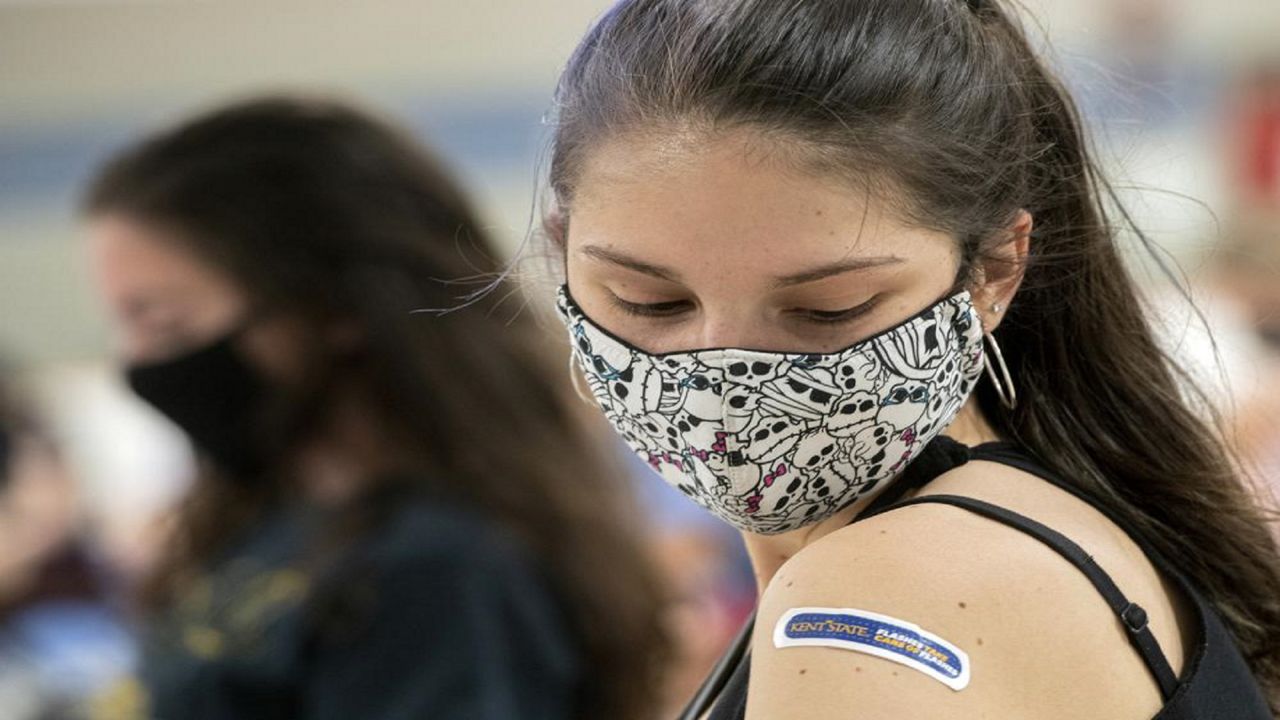COLUMBUS, Ohio (AP) — The number of people in Ohio age 16 and older who received their initial COVID-19 vaccine jumped 33% in the week after the state announced its million-dollar incentive lottery, though an analysis shows vaccination rates lag well behind what they were in March and most of April.
In the week after the May 12 announcement about the lottery, 119,394 people age 16 and older received either the one-dose Johnson & Johnson vaccine or their first part of the two-dose Pfizer or Moderna vaccination, according to Ohio Department of Health data.
That’s an increase of nearly 30,000 from the 89,464 people in the same age group who received a first shot during the seven-day period from May 6 to May 12, according to an analysis of state data by The Associated Press.
The analysis did not include vaccination numbers for children ages 12 to 15, who only became eligible for the vaccine the day the lottery was announced.
Ohio’s data doesn’t track motive, so it’s impossible to know just how many more adults or children were persuaded to receive a vaccine by the shot at a million-dollar prize or a college scholarship.
The Health Department said the post-Vax-a-Million boost was promising.
“The bottom line is that this has changed the trend line in Ohioans starting the vaccination process, and rather than a decline, the trend is moving upward,” said spokesperson Alicia Shoults.
But the data indicates the lottery helped reverse a significant slump in vaccinations.
Only about 1.5% more people got vaccinated in the seven days after the Vax-a-Million lottery was announced as compared to the the period from April 29 through May 5 when 117,578 people received the first vaccine. The number vaccinated following the lottery announcement is also considerably lower — by 17% — than the 143,527 vaccinations during the period from April 22 to April 28.
It’s great if the incentive helps get thousands more residents vaccinated, but the state still has a long way to go if its overall vaccination rate continues to increase so slowly, said Mark Cameron, an immunologist and infectious disease researcher at Case Western Reserve University. He noted that less than half of Ohioans are vaccinated.
“If we can’t figure out how to get the population past the remaining either vaccine refusal or vaccine hesitancy, you know, then we could have issues,” Cameron said. He said he worries that the urgency about getting vaccinated is dwindling and that another surge in cases is possible as restrictions are lifted and we approach Memorial Day and the start of summer.
State Health Director Stephanie McCloud has said the incentives were “needed to reinvigorate interest” in getting vaccinated and that there was a “dramatic increase in vaccinations” in the 16-and-older group.
More than 5.1 million people in Ohio had at least started the vaccination process as of Friday, or 44% of the state. About 4.5 million people are done getting vaccinated, or 38% of the state.
More than 1 million people have entered Ohio’s vaccine lottery since Gov. Mike DeWine announced it during a statewide address May 12.
The Health Department plans to release the total number of entrants May 24 after the first names are drawn and those entries are verified. Winners must be permanent Ohio residents and have received at least one dose of the vaccine, meaning the first person drawn by the state might not be the eventual winner.
The first winners will be announced on May 26 at the end of Cash Explosion, the official Ohio Lottery TV show.
Both adults hoping for the $1 million prize and teenagers looking for the college scholarships can register themselves, but parents or legal guardians must verify their eligibility.
DeWine’s proposal inspired similar vaccine-incentive lotteries in New York State and Maryland.
